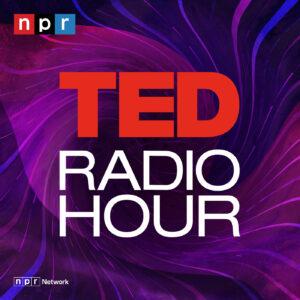Intro
In this episode of “Ologies with Alie Ward,” Alie explores the fascinating world of emojis and their evolution with various emoji experts. From the origins of emojis to their impact on communication and culture, this episode dives deep into the colorful and expressive world of these digital symbols.
Main Takeaways
Evolution of Emojis
- Emoji period started in 2013, before that there were emoticons.
- Emoji are actually fonts, not pictures, and they get standardized.
- Meanings of the more mysterious emoji change very swiftly and experts keep track of them.
- The first emoji was a love heart on a pager in Japan in 1997.
The Language of Hearts
- There are many different types of hearts and people have preferences for which one they use.
- There are over 20 different heart emoji options, and people have preferences for which one they use.
- The black heart is associated with a certain subset of friends, while the red heart with a dot underneath is a heart exclamation mark.
- There are three new colored hearts, and the evolution of color terms in language tends to follow a specific order.
The Evolution of Color Terms in Language
- Different cultures have more or fewer words for colors, but tend to add them in the same order.
- The evolution of color terms in language was first studied in 1969 by anthropologist Overton Brent Berlin and linguist Paul K.
- Different cultures may not differentiate between color terms in the same way, leading to a debate between universalism and relativism.
- The 11 basic color terms are a way of creating a closed set of colors, with gray being one of them.
The Impact of Emojis on Communication and Relationships
- Emojis can have an impact on dating and relationships, with studies showing that emoji users have more sex, go on more dates, and are more likely to want to get married.
- The more emojis used, the more sexual activity occurred, with the wink, smile, and kiss emojis being the most popular.
- Emoji use in texts can act as self-revelations and provide cues necessary to extract emotional information from texts, leading to clearer communication and bonding.
- Neurodivergent individuals may struggle to find the correct emoji to express their emotions, but appreciate using resources like Emoji-pedia to help them understand the meaning behind each emoji.
The Cultural and Gender Differences in Emoji Use
- It is difficult to determine which age group or gender uses emojis the most, but those who are better communicators and more sensitive may be drawn to using them.
- AI can predict sender gender based on emojis with 81% accuracy.
- Men tend to use the streaming tears and monkey with covered eyes emojis more, while women use the blushing smile more.
- Introverts tend to use more emojis than extroverts because they prefer implicit visual context over explicit texts.
The Future of Emojis and Inclusivity
- Emojis are functional and provide some sort of utility, making them hard to argue against using because they are helpful.
- Emojis are being used as an attempt to bridge the gap or fill the gap in communication, providing semantic cues that we interpret in the same way we would posture, expression, tone of voice, etc.
- Customization of emojis is limited by the font technology, which falls short of the amount of customization that avatars can offer.
- There are real limits on how many emojis can be added in a practical sense due to old-school font technology.
Summary
The Evolution of Emojis and Their Cultural Significance
Emojis have come a long way since their inception as emoticons. They have evolved into standardized fonts and their meanings change rapidly. The first emoji was a love heart on a pager in Japan in 1997, and since then, emojis have become an integral part of modern communication.
The Language of Hearts and the Evolution of Color Terms
Hearts are a popular emoji choice, with over 20 different options available. Different cultures may have different words for colors, but they tend to add them in a specific order. The evolution of color terms in language has been studied extensively and raises debates between universalism and relativism.
The Impact of Emojis on Communication and Relationships
Emojis can have a significant impact on dating and relationships. Studies show that emoji users have more sex, go on more dates, and are more likely to want to get married. Emoji use in texts provides cues for emotional information and helps in clearer communication and bonding.
The Cultural and Gender Differences in Emoji Use
While it is difficult to determine which age group or gender uses emojis the most, those who are better communicators and more sensitive may be drawn to using them. AI can predict sender gender based on emojis with high accuracy. Men and women tend to use different emojis, and introverts may use more emojis than extroverts.
The Future of Emojis and Inclusivity
Emojis are functional and provide utility in communication. They are being used to bridge gaps in communication and understanding. However, customization of emojis is limited by font technology, and there are practical limits to the number of emojis that can be added. The future of emojis lies in their continued evolution and inclusivity.
Conclusion
Emojis have become an integral part of modern communication, allowing people to convey emotions and connect with others in a visual and expressive way. The evolution of emojis and their impact on communication and relationships is a fascinating area of study. As technology advances, emojis will continue to evolve, and their inclusivity will play an important role in shaping the future of digital communication.
